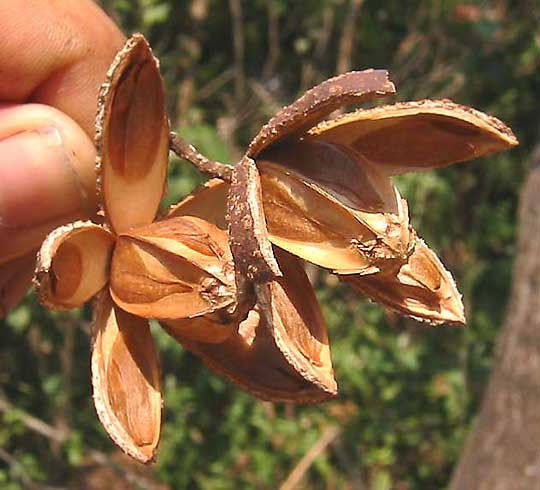Excerpts from Jim Conrad's
Naturalist Newsletter
from the April 28, 2008 Newsletter written in the community of 28 de Junio, in the Central Valley 8 kms west of Pujiltic, elev. ~700m (2300ft), ~N16.331°, ~W92.472°; southeastern Chiapas state, MÉXICO
CEDRO
One of the most important trees of humid, tropical forests from Mexico to South America, in rainy areas growing up to a hundred feet high (30 meters), is the Cedro, sometimes known in English as Spanish-Cedar. It's CEDRELA ODORATA of the Mahogany Family, the Meliaceae. Despite the big trees being leafless at this time they're still conspicuous on the landscape because of abundant fruits dangling at the ends of branches. The fruits split into star-shaped capsules and release papery, winged seeds, as shown below:

A close-up of some split-open fruits is below:

The word "cedro" means "cedar," but the Cedros here aren't similar to or related to the North's cedars, which are evergreen gymnosperms. The cedar connection probably comes about because Cedros's wood is similar to that of our northern cedars, being reddish and emitting a sharp, resiny odor.
Cedros have disappeared from large parts of tropical America because their wood is so prized, and often exported. The species shares many characteristics with closely related Mahogany. Both trees produce capsular fruits with winged seeds, both produce clusters of numerous, small flowers, and both bear pinnately compound leaves looking somewhat like northern ash leaves. Mahogany leaves are evergreen, however, while Cedros lose their leaves during the dry season. Up North the best-known member of the Mahogany Family is the Chinaberry Tree, introduced from Asia.